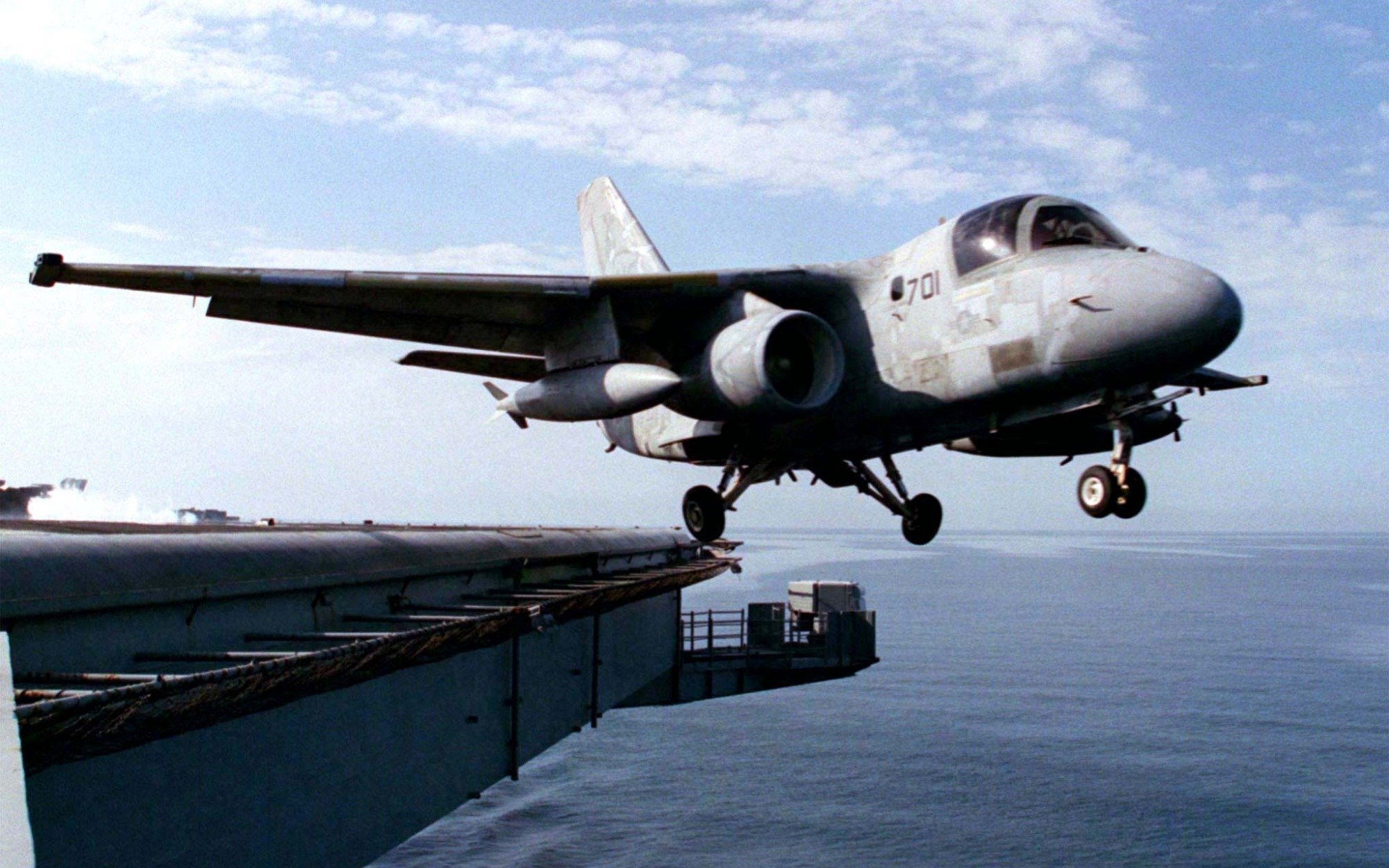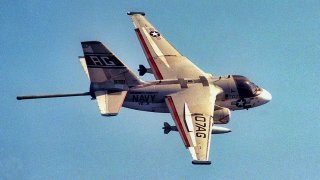The U.S. Navy's Great S-3 Viking Mistake
The S-3 Viking, initially a carrier-based anti-submarine warfare (ASW) platform, transitioned into a vital surveillance and refueling asset for the U.S. Navy in the 1990s.
Summary: The S-3 Viking, initially a carrier-based anti-submarine warfare (ASW) platform, transitioned into a vital surveillance and refueling asset for the U.S. Navy in the 1990s.

-Renamed the S-3B, it replaced the A-6E's surveillance role and offered advanced over-the-horizon capabilities, along with an array of offensive weaponry.
-Despite its effectiveness, the S-3B was retired in 2009 due to budget cuts and the introduction of newer aircraft like the F/A-18E/F. This decision, seen as short-sighted by many, ended the service of a reliable and versatile aircraft that could have continued to support carrier operations well into the 2020s.
The S-3 Viking Should Still Be Flying for the Navy
The S-3 Viking War Hoover was originally conceived as a carrier-based anti-submarine-warfare (ASW) platform. And for the first years of its existence, the S-3A performed that function.
In the 1990s, the Navy opted to end the S-3’s ASW mission set when it created the newer S-3B.
The Viking Was an Innovative Bird
The S-3B was a vital surveillance platform for America’s aircraft carrier fleet that was cut down in its prime by America’s short-sighted and merciless defense bureaucracy. The S-3B was not originally designed to replace the Navy’s surveillance workhorse, the A-6E, but ultimately it filled that role, proving that the Navy can at times be the most innovative of all America’s service branches.

Rather than blowing through gobs of tax dollars to develop an entirely new surveillance platform to replace the A-6E when it was retired in 1997, the Navy just repurposed an existing platform. This saved money and prevented any gaps in the carrier airwing’s capabilities. Sadly, this kind of ingenious thinking is rare in today’s world of defense acquisitions.
The Pentagon is obsessed with incredibly expensive, completely new systems that usually do not perform as advertised and are rarely delivered on budget and on time.
The S-3 was that happy exception.
The S-3 Viking’s Capabilities
The Viking had an excellent record of service. While the Navy gutted the S-3 of its ASW package, the S-3B retained several other offensive capabilities. It possessed an advanced Inverse/Synthetic Aperture Radar that helped the bird in its over-the-horizon surveillance and strike capabilities. It also had infrared (IR) sensors and an Electronic Support System onboard.
S-3B Vikings were crewed by a pilot and two naval flight officers. They were powered by two TF-34-GE-400B turbofan engines with 9,275 pounds of thrust each. These birds had a range of 2,300 miles and could reach top speeds of about 0.79 mach. They might not have been fast when compared to other Navy warplanes, but the Vikings were tough and powerful.

The newer S-3Bs were given an advanced offensive arsenal to marry with their sophisticated detection capabilities, adding to the warbird’s stunning lethality. An S-3B could fire the AGM-84 Harpoon anti-ship missile, the AGM-65 Maverick IR missile, and a host of torpedoes and bombs.
The Vikings Make History
What’s more, according to Military.com, shortly after the invasion of Iraq in 2003, the Navy equipped the Vikings with AGM-84 Standoff Land Attack Missile Extended Range capacities.
Not only was the S-3B Viking a major surveillance provider for U.S. Navy carrier battle groups, but these birds also served as the battle group’s primary overhead/mission refueling tanker. In fact, the Vikings were the carrier group’s only refueling platform from 1997 to 2002.
During that time, the S-3B Vikings outperformed their own specifications in Operation Enduring Freedom, when the U.S. military invaded Afghanistan after al Qaeda’s attacks against the U.S. on 9/11.
The Navy would ultimately gain another, more advanced refueling tanker when F/A-18 E/F warplanes were introduced to the fleet in 2002. But for that first pivotal year of the war in Afghanistan, it was the Navy’s S-3B Vikings that performed the task, helping to ensure early American victories in the ultimately failed war.
Much like the Air Force’s A-10 Warthog, these frumpy birds punched well above their weight. In fact, there was a big fight within the Navy about whether to retire the warbirds by 2006. Full-scale fatigue tests of the S-3 Vikings were completed in 2004 and determined that the aircraft could continue serving as frontline warplanes for years to come.
The tests found that the birds could fly for a maximum of 23,000 flight hours, and the most any Viking had flown for the Navy was about 13,000 flight hours.
At the start of Operation Iraqi Freedom in 2003, the Navy’s S-3B Vikings made history by being the first American warplane to successfully launch a laser-guided Maverick missile against an Iraqi naval target operating in the Tigris River, near Basra, Iraq.
The Viking was in its prime when the Pentagon’s bean counters killed it. The final S-3B Viking flew for the Navy in 2009. They were then moved into retirement, where some units got a second lease on life as test planes for NASA.
By 2021, even NASA had no further use for these underappreciated platforms.
The S-3 Vikings Should Have Remained in Service Until the 2020s
The S-3 lifespan could have extended beyond 2009. The platform could have been a primary workhouse for the carrier fleet until the 2020s.
Here again is a system that is far cheaper than whatever newfangled platforms the Pentagon is procuring to replace it. On some level, its simplicity and relative affordability are probably part of why the Pentagon let the bird die far earlier than it should have.
Like the Bourbons of old, America’s eggheads and policymakers have learned nothing and forgotten nothing. In the age of constrained budgets and restrained foreign policy in which we are living, making older systems last longer will be key to keeping the U.S. military relevant and capable if and when another great power war erupts.
About the Author
Brandon J. Weichert, a National Interest national security analyst, is a former Congressional staffer and geopolitical analyst who is a contributor at The Washington Times, the Asia Times, and The-Pipeline. He is the author of Winning Space: How America Remains a Superpower, Biohacked: China’s Race to Control Life, and The Shadow War: Iran’s Quest for Supremacy. His next book, A Disaster of Our Own Making: How the West Lost Ukraine, is due October 22 from Encounter Books. Weichert can be followed via Twitter @WeTheBrandon.
All images are Creative Commons.


